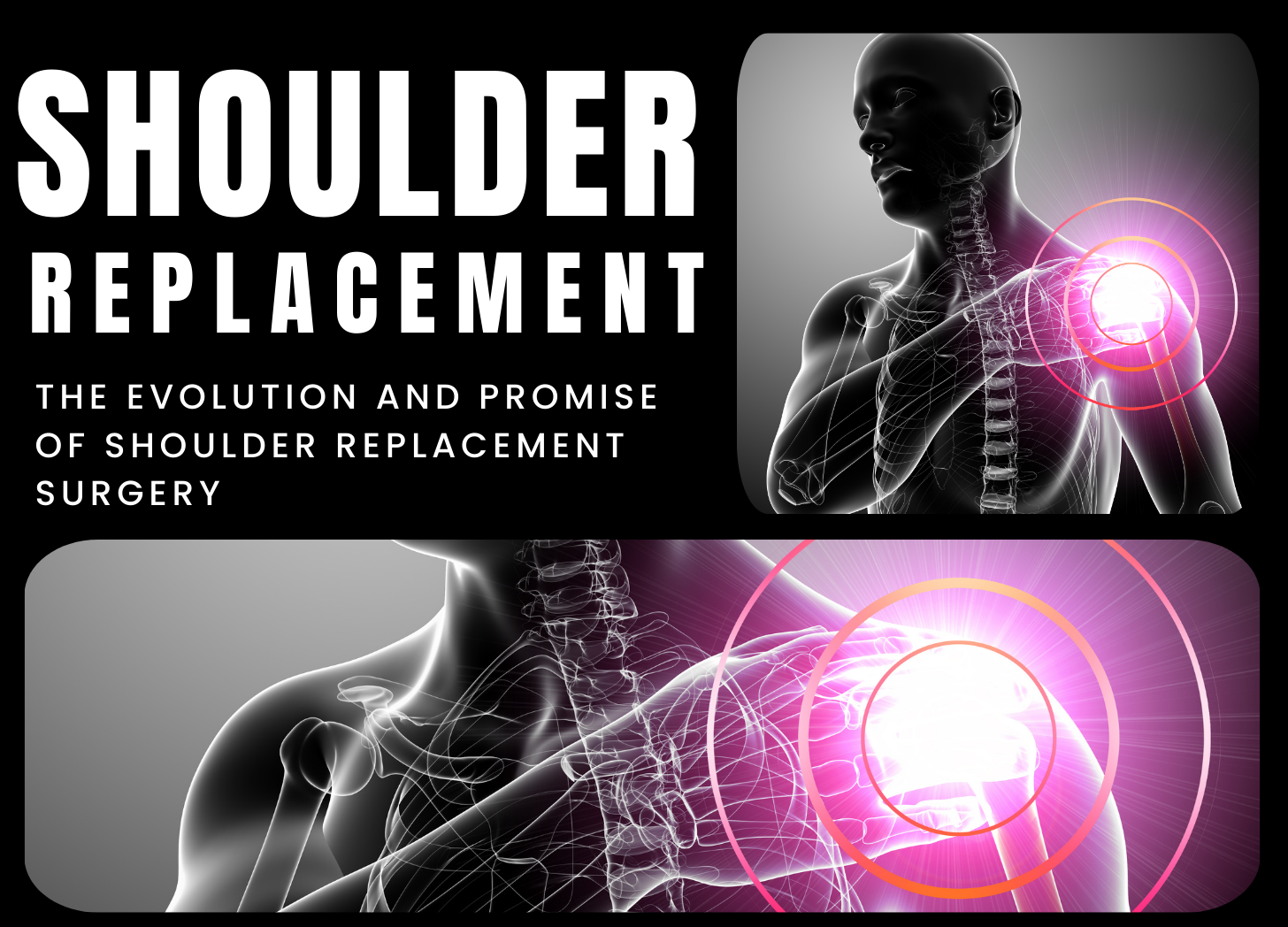Contact Us
Contact Us

Shoulder replacement surgery has emerged as a transformative solution for individuals suffering from chronic shoulder pain and limited mobility due to various shoulder joint disorders. This surgical procedure involves replacing the damaged parts of the shoulder joint with artificial components, providing pain relief and restoring functioning. Techniques and materials developments have dramatically improved results for individuals undergoing shoulder replacement surgery throughout the years.
The history of shoulder replacement surgery dates back to the mid-20th century when surgeons began looking for solutions to treat severe shoulder arthritis and catastrophic injuries. Dr. Charles Neer and Dr. Frank Neer pioneered early efforts that created the foundation for modern shoulder replacement treatments. These early efforts opened the path for improvements in surgical techniques and implant designs.
Contemporary shoulder replacement procedures take a variety of techniques that are adapted to specific patient needs. Surgeons commonly perform two types of shoulder replacements: total shoulder replacement and reverse shoulder replacement. Surgical method advancements, such as minimally invasive treatments and computer-assisted navigation, have resulted in greater implant placement precision and faster recovery periods.
Materials science advances have transformed shoulder replacement implants, seeking to maximize longevity and usefulness. From standard metal and plastic combinations to more advanced materials like highly polished metal and specialized plastics, continuous research strives to improve implant durability and function. These advancements have a substantial impact on the success and lifespan of shoulder replacements.
Post-operative care and rehabilitation play a vital role in ensuring successful outcomes for shoulder replacement patients. Customized physical therapy programs can help you regain strength, range of motion, and functionality. Patients benefit from shorter recovery durations and a quicker return to daily activities as rehabilitation procedures and pain management tactics evolve.
Shoulder replacement surgery has numerous benefits, including pain relief and restoration of shoulder function. According to studies, the majority of patients report significant improvements in their quality of life following surgery, including less discomfort and enhanced capacity to perform daily chores such as reaching overhead or lifting objects.
The evolution of shoulder replacement surgery shows amazing advances in medical research, providing hope and increased mobility to patients suffering from shoulder joint disorders. With continuing research, technological advancements, and perfected surgical techniques, the future of shoulder replacement surgery holds promise for even greater outcomes, ensuring patients’ improved quality of life.
References:
American Academy of Orthopaedic Surgeons. “Shoulder Replacement.” OrthoInfo – AAOS, www.orthoinfo.aaos.org/en/treatment/shoulder-replacement.
National Institute of Arthritis and Musculoskeletal and Skin Diseases. “Shoulder Replacement Surgery.” NIH, www.niams.nih.gov/health-topics/shoulder-replacement-surgery.
Neer, C. S., & Watson, K. C. “The Classic: Fractures of the Shoulder in the Adult.” Clinical Orthopaedics and Related Research, vol. 83, 1972, pp. 165-172.
Post a Comment